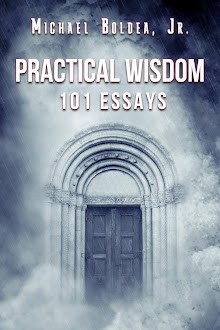I couldn’t sleep last night, so after easing myself out of bed as to not wake my wife, I went into the other room and began to read my Bible. I do this often when I am restless, and as I was thumbing through the first book of Kings the description of the temple caught my eye.
It must have been a sight to behold, a magnificent edifice, gleaming and overlaid with gold, imposing in its size, and awe inspiring in the carvings that were on its walls.
As I read through the description of the temple that Solomon had built, I was overtaken by a sadness of sorts because I realized the great inconsistency between the beauty of the temple, and the lives of the priests therein as well as those who came to bring offering and sacrifice. The walls of the temple looked more like heaven than the priests; the temple was purer than the worshippers that filled it every Sabbath.
As I continued to pursue this train of thought a teaching of sorts began to take shape, and I realize that such an inconsistency was not reserved merely for those of old, but it is plain and visible in our day and age.
1 Kings 6:29-32, “Then he carved all the walls of the temple all around, both the inner and outer sanctuaries, with carved figures of cherubim, palm trees and open flowers. And the floor of the temple he overlaid with gold, both the inner and outer sanctuaries. For the entrance of the inner sanctuary he made doors of olive wood; the lintel and doorposts were one-fifth of the wall. The two doors were of olive wood; and he carved on them figures of cherubim, palm trees, and open flowers, and overlaid them with gold; and he spread gold on the cherubim and on the palm trees.”
As I said, one could readily imagine the beauty of the temple, Solomon having spared no expense, even overlaying the floor of the temple with gold, and spreading gold on the carvings of the cherubim and the palm trees all around the inner and outer sanctuaries.
The temple was beautiful, of this there was no doubt, as many sanctuaries are today throughout our land, one more imposing and ornate than the other, one more dazzling and oddly shaped than the next, but just as in the days of old, there is an inconsistency between the beauty of our sanctuaries, and the duplicity of our hearts.
One need only juxtapose the passage in 1 Kings with the message God gave Jeremiah for those coming to worship in the temple to see the great inconsistency for themselves.
Jeremiah 7:1-4, “The word that came to Jeremiah from the Lord, saying, ‘stand in the gate of the Lord’s house, and proclaim there this word, and say, ‘hear the word of the Lord, all you of Judah who enter in at these gates to worship the Lord!’ Thus says the Lord of hosts, the God of Israel: ‘amend your ways and your doings, and I will cause you to dwell in this place. Do not trust in these lying words saying, ‘the temple of the Lord, the temple of the Lord, the temple of the Lord are these.’
Jeremiah 7:9-10, “Will you steal, murder, commit adultery, swear falsely, burn incense to Baal, and walk after other gods whom you do not know, and then come and stand before Me in this house which is called by My name and say, ‘we are delivered to do all these abominations?’
We build as though God is impressed without cathedrals, we carve and inlay with gold as though this will somehow take away from the reality that our hearts are filled to overflowing with idolatry and adultery and covetousness and jealousy and all manner of things that have no place in the house of God. We believe the lying words of those who proclaim that as long as we give to the building fund, and the airplane fund, and the new parsonage fund God will somehow overlook the inconsistency between what we speak and how we live or that He will somehow gloss over the sin that is ever present in our lives.
God is not impressed by sanctuaries, God is not impressed by cathedrals, and He would rather have a handful of faithful, righteous, sanctified souls worship Him in a shack, than thousands of hypocrites feigning worship in a temple.
There are however certain lessons we can learn from the temple and the way it was decorated, lessons those of Jeremiah’s time would have done well to perceive, so that their worship might have been authentic, and true, and received in the sight of God.
The first thing that leapt out at me was the fact that not only were the inner and outer sanctuaries covered with carved cherubim, but the two doors of the temple had carvings of cherubim as well.
So why is this seemingly irrelevant fact noteworthy? What could it possibly teach us?
To me at least, and from a spiritual perspective what this signifies is that we must be on the outside as we are inside. There cannot be any inconsistency between the heart and the life of the believer. Our words must mirror our actions, our conduct must mirror our beliefs, and our lives must mirror the life of Christ.
Now I realize there are some who say that the outwardly parts have nothing to do with the inward state of the heart, but it was Jesus who said that out of the abundance of the heart the mouth speaks. That which is in the heart of a man is evident in his life, whether the fruit of the spirit or the fruit of unrighteousness, one’s actions always reveal one’s heart.
The second thing I noticed is that none of the cherubim were holding swords. Nowhere in the description of the temple does it say that the carved cherubim were holding swords, even though we are told in Genesis that the cherubim that was guarding the tree of life was in fact holding a fiery sword.
What this signifies to me is that the house of God, the temple of God ought not to be a place of warfare. When we come together in fellowship it should be to encourage one another, to build up one another, to strengthen one another, and not to stab at each other blindly in the hope that we will climb the ladder of church or denominational hierarchy by another rung by standing on our brother’s corpse. The battle is not with my brothers or my sisters in Christ, it is with the hosts of darkness and the principalities thereof.
The third thing that stood out in regards to the decoration of the temple was the palm trees that were carved on the walls. Ask anyone who’s been in the desert what a palm tree signifies, and they will readily tell you that it signifies there is a water source nearby. For those traveling through the desert, water is nothing less than life itself, and from a spiritual perspective, we as believers ought to be as palm trees, clearly and visibly declaring that we are trees planted by the waters of life, that in the midst of this desert we call the world, we have found life in Christ Jesus. We are not branches, we are not leaves, we are trees with deep roots, we are trees that are fruitful, we are trees that are dependent on Christ for life, and the world must see this in us.
Having cathedrals and building extravagant sanctuaries will not attract the power of God, it will not compel God to move in supernatural ways, but having a clean heart, having a humble spirit, and having a heavenly minded purpose will.
Clean temples and filthy hearts are an abomination to God, and though we might cry ‘the temple of the Lord, the temple of the Lord’, God sees beyond the words into the hearts of men, and it is the hearts of men He judges in righteousness and holiness.
With love in Christ,
Michael Boldea Jr.
Sunday, July 31, 2011
Subscribe to:
Post Comments (Atom)













1 comment:
[url=http://paydayloansusa1h.com/#6386]payday loans[/url] - payday loans , http://paydayloansusa1h.com/#18721 payday loans
Post a Comment